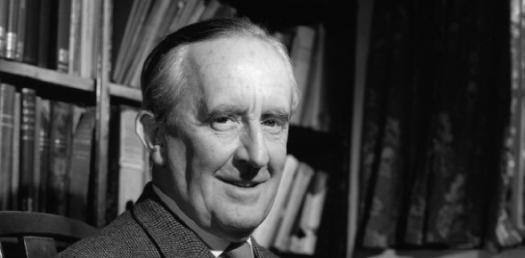Literature Trivia
Ready to put your knowledge to the test? Challenge yourself with these fun trivia questions and see how much you truly know! Keep track of your score and see if you can ace them all!
You might enjoy exploring these engaging Literature Quizzes!
Top Trending Trivia
Questions: 12 | Viewed: 20330 | Last updated: Jul 10, 2025
- 1. Which pilgrim tells a tale about a knight who must discover what women desire most?
- 2. What is the name of the inn where the pilgrims meet before starting their journey?
- 3. Which pilgrim is described as being "choleric" and having a fiery red face, suggesting a quick temper and a fondness for alcohol?
Questions: 46 | Viewed: 15925 | Last updated: Feb 22, 2025
- 1. What age was Percy when he entered camp?
- 2. Who is captured by the Cyclops Polyphemus in "The Sea of Monsters"?
- 3. What are Chiron's brothers' centaur group called??
Questions: 58 | Viewed: 8015 | Last updated: Feb 22, 2025
- 1. In The Hunger Games, Jennifer Lawrence plays Katniss, a young woman from one of her country's many districts. Which district is she from?
- 2. What is Katniss's sister's name?
- 3. Katniss's fellow tribute is Peeta. What is Peeta's father?
Recent Trivia
Questions: 122 | Viewed: 4215 | Last updated: Jul 09, 2025
- 1. What has PennyWise shape shifted into the most?
- 2. What does Bill call his bike?
- 3. There are three main bullys, there is:-Belch Huggins-Henry Bowsers-?
Questions: 27 | Viewed: 368 | Last updated: Jun 22, 2025
- 1. When is J.K. Rowling's Birthday?
- 2. In what year did Rowling finish the last book in the Harry Potter Series?
- 3. How many siblings does Rowling have?
Questions: 109 | Viewed: 1661 | Last updated: May 22, 2025
- 1. VILGOT
- 2. ARATAR
- 3. GLAURUNG

Questions: 128 | Viewed: 100 | Last updated: May 22, 2025
- 1. Where did Roald Dahl's Charlie spent an amazing day with Grandpa Joe?
- 2. Which book series includes "The Hostile Hospital", "The Vile Village" and "The Austere Academy"?
- 3. Which book was the first in Madeleine L'Engle's "Time Quartet"?

Questions: 14 | Viewed: 122 | Last updated: May 22, 2025
- 1. How many men belong to the titular group in the 2007 film "The Jane Austen Book Club"?
- 2. Which member of "The Jane Austen Book Club" is left by her husband in the 2007 movie?
- 3. What does Jocelyn do in her spare time in the 2007 movie "The Jane Austen Book Club"?
Literature Trivia Questions
The Wife of Bath's Tale is a key story in The Canterbury Tales. It centers on a knight who, to save his life, must learn what women desire most. This tale reflects the Wife of Bath's own experiences and perspectives on marriage, love, and female autonomy. It's a story rich in social commentary and humor, typical of Chaucer's style.
The Tabard Inn, located in Southwark (a district of London), is the gathering point for the pilgrims in The Canterbury Tales. It is here that the Host proposes the storytelling contest and sets the framework for the narrative structure of the work. The Tabard Inn serves as a microcosm of medieval society, bringing together individuals from various social classes and walks of life.
In The Canterbury Tales by Geoffrey Chaucer, the Miller is described as being "choleric" with a fiery red beard and a wart on his nose, symbolizing a hot temper and coarse nature. His red face is often interpreted as a sign of excessive drinking and a quick temper—traits commonly linked to the medieval belief in bodily humors, where "choleric" indicates anger and aggressiveness. His vulgar stories and crude personality further support this physical and temperamental description, making the Miller the correct answer.
Chaucer is often considered the first representative of the Humanism movement in English literature because his works, such as "The Canterbury Tales," focused on the individual and human experiences, as well as the importance of reason and education. Humanism emphasized the value of human beings and their ability to reason, rather than relying solely on religious or supernatural explanations. Chaucer's works reflected this humanistic perspective and marked a shift towards a more secular and individualistic approach in literature.
The Canterbury Tales were written between 1387 and 1400. This period aligns with the lifetime of the author, Geoffrey Chaucer, who is known for his work on this collection of stories. Chaucer began writing the tales around 1387 and continued working on them until his death in 1400. The Canterbury Tales is considered a significant literary work of the Middle Ages and provides insight into the social and cultural aspects of that time period.
William Caxton, a printer and merchant, published the first edition of Geoffrey Chaucer's Canterbury Tales in 1476. Caxton was an early pioneer of printing in England, and his printing press played a significant role in the dissemination of literary works during the late 15th century. The Canterbury Tales, a collection of stories written by Chaucer in Middle English, became one of the first major literary works printed in the English language. Caxton's efforts contributed to the preservation and wider availability of Chaucer's masterpiece, making it more accessible to a broader audience. The exact date of publication is often cited as 1478, making it one of the earliest books printed in England.
In the Canterbury Tales, the literary technique used to connect one story to a series of other stories is called a "frame narrative." This technique involves a main story or frame that encloses and links several smaller stories. In Chaucer's work, the frame is the pilgrimage to Canterbury, during which various characters tell their own tales. This structure allows for a diversity of voices and themes, enriching the text with multiple perspectives and insights into medieval life.
The Nun's Priest's Tale tells the story of Chanticleer, a proud rooster who is tricked by a fox. This tale is a classic example of a beast fable, where animals are used to represent human characteristics and convey moral lessons. In this case, the tale satirizes the clergy and explores themes of pride, vanity, and the importance of discernment.
Geoffrey Chaucer completed 24 tales in The Canterbury Tales. Each tale is told by one of the pilgrims on their journey to Canterbury. The tales cover a variety of genres, themes, and styles, showcasing Chaucer's skill in storytelling and providing a diverse picture of medieval society. It's important to note that Chaucer did not finish all the planned tales. In his original plan, each of the 30 pilgrims was supposed to tell two stories on the way to Canterbury and two more on the way back, making a total of 120 tales. However, he was unable to complete this ambitious goal before his death. The unfinished nature of The Canterbury Tales leaves us with a collection that offers a glimpse into Chaucer's storytelling genius and medieval English society.
The pilgrimage in Geoffrey Chaucer's The Canterbury Tales takes place in spring. The General Prologue of the work opens with the famous lines that celebrate the rejuvenation of April, with its showers piercing the drought of March and bringing life to the world, stirring people to go on pilgrimages. This setting of spring symbolizes a time of renewal and reflects the themes of new beginnings and spiritual rebirth that are common in the tales.
The Franklin's Tale is classified as a Breton lai, a genre of medieval romance that often incorporates elements of the supernatural and explores themes of love, chivalry, and magic. This tale, set in Brittany, France, features a love triangle, a magical illusion, and a complex moral dilemma, reflecting the conventions of the Breton lai tradition.
The Knight in The Canterbury Tales is portrayed as a paragon of chivalry and honor. Chaucer describes him as "worthy," emphasizing his virtuous character and noble deeds. He has participated in numerous battles, showcasing his bravery and martial prowess. These battles were fought in service of his faith and lord, highlighting his dedication to the chivalric code. Unlike other characters in the tales, the Knight's depiction lacks irony, reinforcing his genuine honorability. His humility, despite his accomplishments, further elevates his stature. Chaucer's detailed description reflects societal ideals of knights as loyal, valiant, and virtuous figures.
PennyWise has shape shifted into a clown the most.
Bill calls his bike "Silver" because the question asks what he calls his bike, and "Silver" is one of the options provided.
The question is asking for the name of the third main bully, and the correct answer is Victor Criss. This answer is derived from the list of names provided, where Victor Criss is the only name that has not been mentioned before.
The story of IT takes place in the fictional town of Derry, Maine. This town is a recurring location in Stephen King's works, but it is most famously associated with IT, where a group of children, known as the Losers' Club, confront the shape-shifting entity that often takes the form of Pennywise the Clown. Other locations like Castle Rock and Salem’s Lot are featured in different King novels, but IT is specifically set in Derry.
It says at the start of the book.
Ben says it when Michael becomes apart of the group.
Stan is so shocked he decideds he does not wanna live anymore. So he writes IT on the bathroom wall, when his wife comes to give him a "rub"
In Stephen King's IT, the story alternates between two timelines: the characters as children in 1958 and then as adults in 1985 (27 years later). This cycle of 27 years is key to Pennywise's return to Derry. The Losers' Club made a pact to come back if IT ever returned, and they are called back as adults to fulfill it. This structure forms the emotional and thematic core of the novel, highlighting trauma, memory, and the power of childhood bonds.
Watch the trailer.
PennyWise tears his arm write off, caushing him to be shocked and lose to much blood.
The Deadlights are a metaphysical representation of IT's true form, existing in a dimension beyond human comprehension. While Pennywise is the creature’s physical manifestation used to lure and terrify victims, the Deadlights are its pure, alien essence. Anyone who gazes directly into them risks insanity or death, as the human mind cannot process their cosmic horror. In the novel, characters like Beverly and Bill glimpse the Deadlights and describe them as mesmerizing yet mind-shattering—symbolizing IT’s otherworldly origin beyond space and time.
In Stephen King's "IT," The Losers' Club is a group of seven misfit children who unite over their individual encounters with the shape-shifting terror, Pennywise the Clown. Together, they form a bond of friendship and courage, vowing to defeat the entity haunting their hometown of Derry, Maine.
Pennywise is a punk band that got their name from the character Pennywise the Dancing Clown in Stephen King's novel "It." The band chose this name as a homage to the iconic horror novel and character, reflecting their interest in horror themes and adding a sense of edginess to their punk image.
(505).jpg)
(179).jpg)
(180).jpg)


